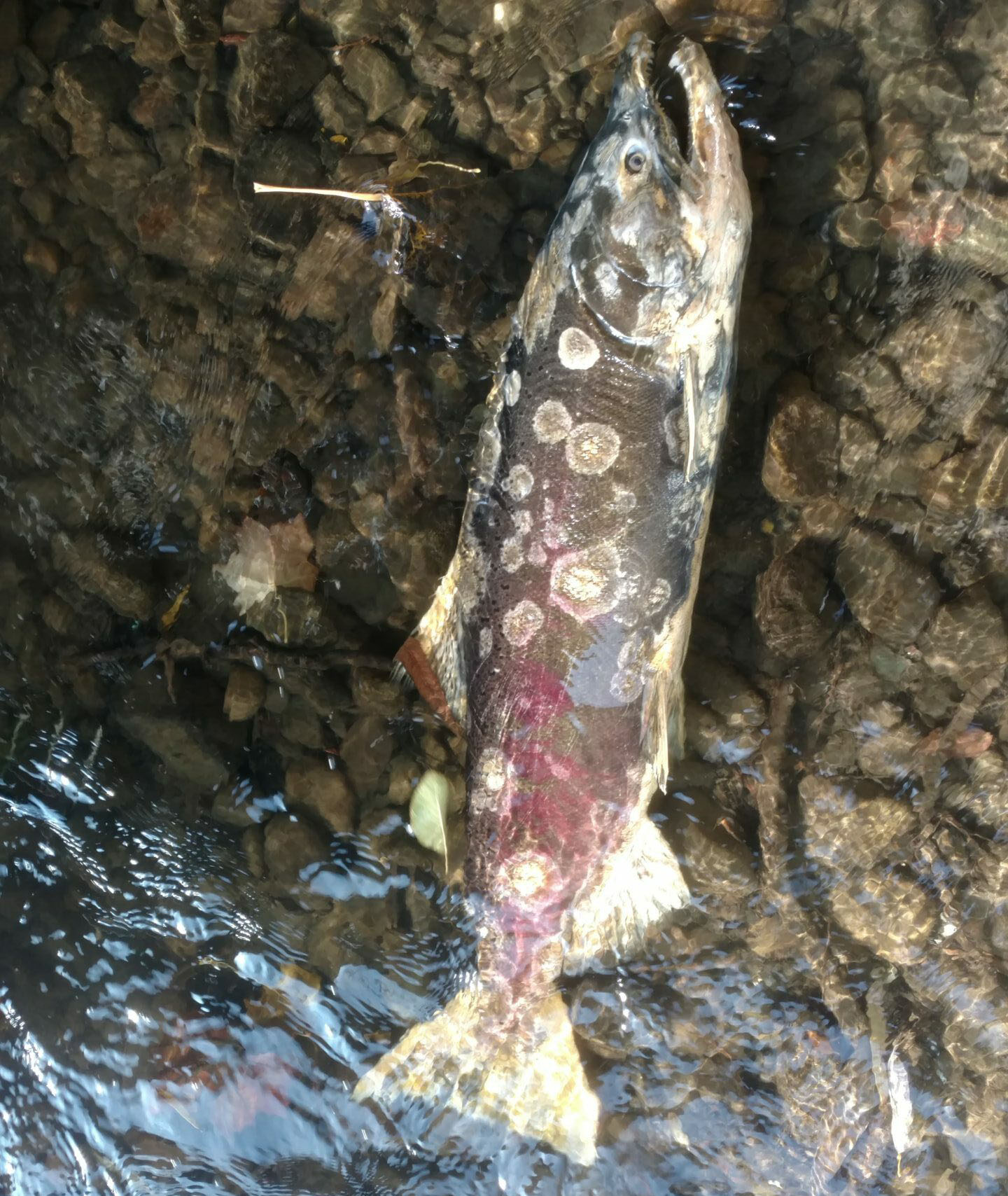
By the time Estuary News debuted in 1993, the Central Valley’s once abundant runs of Chinook salmon had been severely depleted by dams, diversions, pollutants and predation by non-native fish. Sacramento River winter-run fish were federally listed as endangered in January 1994; the Central Valley spring run was listed as threatened in 1999 and the fall run is identified as a species of concern. Protecting and rebuilding these populations has been a lodestar for many, if not most, of the efforts to restore the Bay and Delta, beginning with 1992’s Central Valley Project Improvement Act. Over the decades, armies of scientists, engineers and water managers have sought to better understand and mitigate the threats to this iconic fish, while lawyers, activists and politicians have battled over their habitat and freshwater flow needs. To read about salmon in the context of other estuarine fishes with different life stories see Estuary’s special March 2022 Fish Tales issue.
When a team of fish biologists was tasked with restoring spring-run Chinook salmon in the San Joaquin River in 2006, none of them quite knew where to begin. The riverbed had been parched for so long that someone even built a house in it. The salmon that once thronged up-river by the hundreds of thousands had vanished, and there was no precedent for jumpstarting a population from scratch.
California’s disappointing history of salmonid recovery programs has motivated a group of scientists from public water agencies and environmental conservation groups to step back, dream big, and take a new path forward. This group wants to abandon familiar heated dialogues and litigious relationships and try a new approach toward fish recovery based on collaboration, common interests and science.
After two critically dry years that coincided with Trump-era rollbacks to environmental protections, some iconic Delta fish are closer than ever to the point of no return. Last fall, the fall midwater trawl found zero wild Delta smelt, while a coalition of environmentalists and fishermen is asking a federal court to help prevent a repeat of 2021’s near-obliteration of endangered winter-run Chinook salmon. Their lawsuit is just one of several projects….
In 2012 a team of salmon researchers tried a wild idea: putting pinky-sized Chinook on a rice field in the Yolo Bypass, a vast engineered floodplain designed to protect the city of Sacramento from inundation. The team found that rearing fish on farms works better than they had ever dreamed.
It’s a cold morning in early February, and Chris Vallee of the U.S. Geological Survey is motoring upriver along Steamboat Slough. Vallee and his team are here to maintain an array of hydrophones used to track migrating native fish. The work is part of a multi-agency effort to provide more timely and detailed information about the movements of salmon, steelhead, and sturgeon in the Central Valley.
“The dream is to reestablish a natural run of salmon in Putah Creek,” says UC Davis professor emeritus Peter Moyle. In 1972 Putah creek was a trickle of water between heavy machinery mining gravel for the campus roads. Moyle and others urged the university to cease mining and by the end of the decade the administration had designated a riparian reserve along the creek on campus. Since then there’s been an incredible increase in salmon….
Salmon once flourished in California despite huge swings in climate that were far more extreme than those today. But then people re-engineered the state’s waterways to meet their own needs. “Complexity is what salmon thrive on, and we’ve been making their habitat simpler and simpler,” says biologist Bruce Herbold. “We haven’t been playing to their strengths.”
Two decades after the South Bay’s main water supplier agreed to restore aquatic habitat in the streams that flow from its reservoirs, fish in the region remain in dire straits, and local river advocates say it’s the Santa Clara Valley Water District’s fault. Chinook salmon and steelhead in Coyote Creek, Stevens Creek, and the Guadalupe River remain as scarce as ever.
Ted Frink recalls watching Jacques Cousteau’s television specials when he was growing up in coastal Orange County. “I envisioned myself as Cousteau,” says Frink, a fisheries biologist with the California Department of Water Resources (DWR) now approaching retirement. “My folks encouraged my interest in science. I knew I could be a biologist.” That early inspiration […]
On the morning of November 8, 2018, Allen Harthorn, a farmer who lives near the town of Paradise, watched a dark cloud of smoke forming in the east and began to worry about the safety of his home. He also began to worry about some other residents of the Butte Creek watershed—the largest run of naturally spawned spring Chinook in California.
A decade of research by David Baldwin of NOAA’s North west Fisheries Science Center and other biologists has shown that very low levels of dissolved copper interfere with a salmon’s ability to detect smells. This can be a matter of life or death: salmon rely on their olfac tory sense to avoid predators…
Walk back through time with this selection of early stories from Estuary’s first two decades of publication. These stories explore impacts on salmon from pesticides, copper in brake pads, and water temperatures, as well as fights over critical habitat and water allocations for fish.